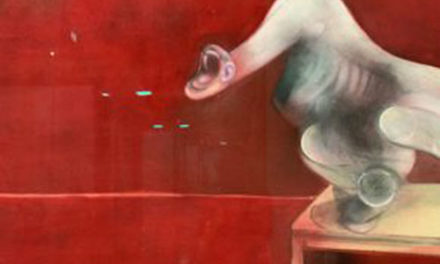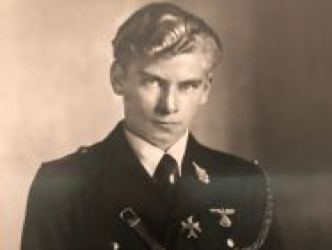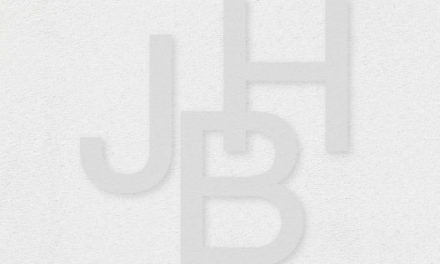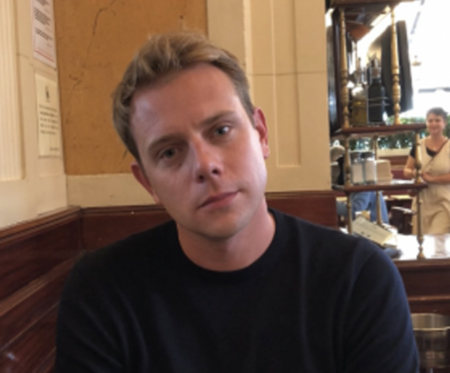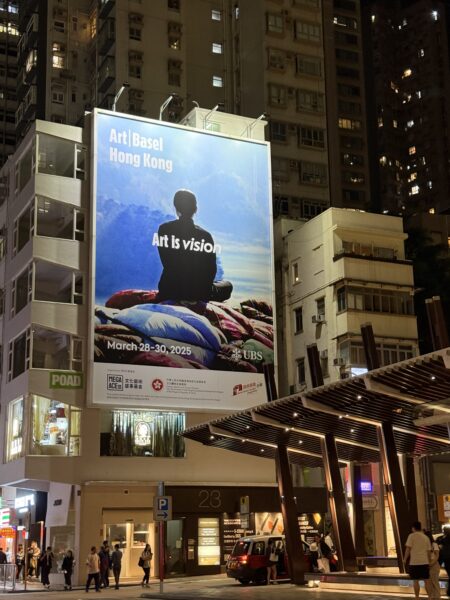
The center of the art world
For one week out of the year, the center of both the art world and the art market is found in Asia—more specifically, Hong Kong. That’s where, from March 28 to 30 this year, Art Basel Hong Kong (ABHK) is being held, joined by 240 exhibitors. The current global situation of political, geostrategic and economic insecurity is not exactly conducive to the buying of art, no matter where the collector may be. According to the ArtPrice database, sales of fine art in Hong Kong have seen their financial volume almost cut in half between 2023 and 2024, dropping at auction from US $1 billion to $658 million.
Lack of supply
“The market is more strained,” acknowledges Francis Belin, head of Asia at Christie’s, “But our main problem is the lack of works to sell, not the level of demand.” (See here an other interview of Francis Belin)
Tracey Emin
At ABHK, as early as opening day, several international art stars saw their works being acquired. Take for instance Tracey Emin (born in 1963), the English painter currently the subject of a retrospective in Florence at the Palazzo Strozzi (See here a report about the Tracey Emin show in Florence), who will also be shown next year at the Tate in London.
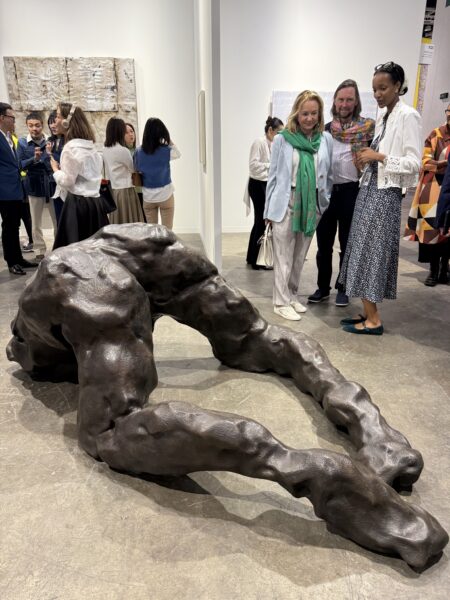
Tracey Emin
At the booth of the British White Cube gallery , a very expressive bronze sculpture of a kneeling figure, depicting only the lower half of the body—a smaller version of a nine-meter-long piece displayed in the Palazzo courtyard—had, on the morning of the opening, already been reserved (listed at £520,000).
Anicka Yi
South Korean artist Anicka Yi (born in 1971) is currently on display at the first contemporary Chinese art museum, UCCA in Beijing. Her work has also been shown at the Tate in London, the 58th Venice Biennale and at the Pinault Collection in Paris. One of the conceptual artist’s dreamlike pieces—a robotic sculpture resembling a giant insect or jellyfish with moving tentacles made of translucent silicone—was also sold by opening day, by the Gladstone Gallery for $225,000.
UCCA
In Asia, most museum institutions are private. UCCA, for example, now funds part of its activities through UCCA Lab, which offers partnerships with companies. For its 20th anniversary in 2027, Philip Tinari, director of the Beijing institution, plans to start acquiring works for a permanent collection. Naturally, he traveled to Hong Kong for this week of art. (See here an other interview of Philip Tinari)
Angelle Siyang-Le
More broadly, ABHK is a meeting point for numerous private museums from all over Asia. It’s striking to see to how, even in this climate of uncertainty, these institutions continue to flourish, even multiply. “In the past ten years, Asia has been the region with the most cultural development in the world,” observes Angelle Siyang-Le, director of the fair. (See here an other interview of Angelle Siyang-Le)
Khao Yai Art Forest
In Thailand, for example, the Khao Yai Art Forest opened in February 2025 in the middle of a nature reserve three hours by car from Bangkok. It’s a suite of contemporary art installations designed to be in harmonious dialogue with nature. The same organization, financed by Marisa Chearavanont (a prominent Korean Thai figure from a family that made its fortune in the food agriculture industry), inaugurated the Bangkok Kunsthalle in January 2024.
Stefano Rabolli Pansera
According to Stefano Rabolli Pansera, the director of these two institutions, Chearavanont’s vision came out of the legendary collection of American minimalist artist Giuseppe Panza (1923-2010), from whom she purchased 200 pieces three years ago.
This coming December, also in Bangkok, will be the opening of the DIB museum inside a repurposed industrial building owned by the Thai Osathanugrah family.
Nick Ma
Strolling down the aisles of the fair on opening day, one might have crossed paths with the young Nick Ma. In April 2025, he will open a museum in Shandong, eastern China, dedicated to promoting and supporting young Chinese contemporary artists. He has already purchased from the Parisian gallery Balice-Hertling (also present at ABMB) a painting by Chinese artist Zhi Wei (born in 1997), who creates figurative compositions by layering painted veils (listed at €17,000).
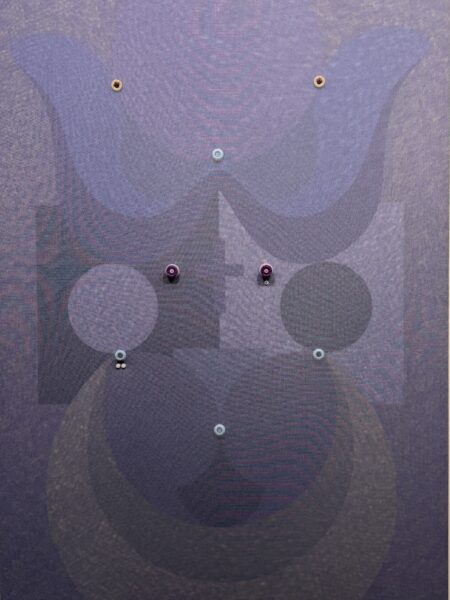
Zhi Wei
Kiang Malingue
There is, without a doubt, tremendous innovation among young Asian artists today. The Kiang Malingue gallery, based in Hong Kong, is showcasing the work of the politically engaged Singaporean artist, Ho Tzu Nyen (born in 1976). At first glance, his work resembles light-hearted cartoons or archival footage. During the fair, one of his films is being projected onto the giant facade of the city’s contemporary art museum, the M+.
Ho Tzu Nyen
Ho Tzu Nyen has these videos made from instructions given to a North Korean animation studio. They might feature monsters representing colonialists or the Opium War, all depicted in a relatively playful tone. The artist is currently the subject of an exhibition at the Mudam in Luxembourg, and his work has been acquired by the Tate, the MoMA in New York and the Guggenheim in Abu Dhabi (priced between $60,000 and $150,000).
To appreciate is to support.
To support is to donate.
Support JB Reports by becoming a sustaining Patron with a recurring or a spontaneous donation.
Lu Yang
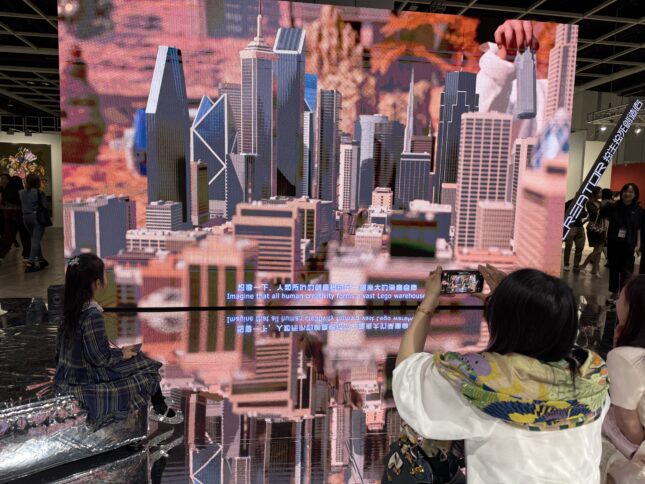
Lu Yang
The Chinese artist Lu Yang (born in 1984), who is based in Tokyo, is also receiving a lot of international recognition (See here a report about Lu Yang). His work was shown in 2024 at the Fondation Vuitton in Paris, and he was named “Artist of the Year” in 2023 by Deutsche Bank. He creates parallel universes based on a digital avatar and motion capture technology.
At Art Basel Hong Kong, he presented his latest digital film, “Doku the Creator,” sold by the Hong Kong-based gallery De Sarthe for $130,000, with six editions produced—one of which was already reserved on opening day. With the help of AI, he also created 108 NFTs (non-fungible tokens), derived from the film, offered at €650 each.
Tim Blum
Despite the anti-Japanese propaganda that still inundates official Chinese culture today, Japan’s sophistication and proximity is a key attraction for wealthy Chinese, some of whom even relocate there. Los Angeles gallerist Tim Blum has also had an outpost in Tokyo for ten years. This is his first time back at the Hong Kong fair since 2019.
He did not bring his star artist, the Japanese Yoshitomo Nara (born in 1959), who is particularly popular in China and remains one of the world’s top-selling artists. The Guggenheim Bilbao recently closed a retrospective dedicated to him. In 2019, one of his paintings—they typically depict highly expressive cartoon-like figures, often with a disillusioned air—sold for a record $24.9 million. As recently as 2023, another, smaller painting sold for €12.8 million.
Sadamasa Motonaga
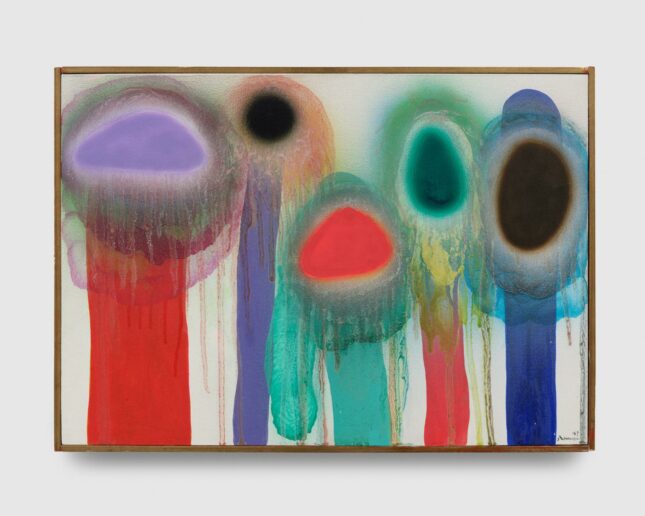
Sadamasa Motonaga
“Nara is an extraordinary universal communicator,” says Tim Blum. “But he’s not interested in the art market,” which likely explains why he declined to be shown at Blum’s booth in Hong Kong. Japan is nevertheless represented on his booth, by one of the great names of the Japanese avant-garde of the 1960s and 70s, Sadamasa Motonaga (1922-2011). One of his striking polychrome paintings from 1969, halfway between a series of explosions and a depiction of flowers, is listed for $150,000.
Shao Fan

Shao Fan
The British gallery White Cube just announced that it now represents a fascinating yet underrecognized Chinese artist, Shao Fan (born in 1964). He is especially known for his depictions of giant rabbits.
But the subject is misleading: These are meditative exercises that take nearly a month to complete, as the artist meticulously fills in the fur with countless fine ink lines on rice paper. According to the artist, the process comes from Taoist philosophy. One of his modest-sized works was listed at White Cube’s booth for $100,000.
Julian Charrière
Obviously, ABHK is also a platform for international art. For example, the Perrotin Gallery is showcasing the recent work of Berlin-based French Swiss artist Julian Charrière (born in 1987). Starting June 10, this artist who likes to play with all kinds of imagery to address, in particular, environmental issues, will exhibit his work at the Tinguely Museum in Basel, before taking over the Mona Museum in Tasmania and the MOCA in Los Angeles next year.
On view in Hong Kong is one of his heliographs, a technique invented in 1822 in which the image is fixed using bitumen, essentially petroleum. The image depicts a landscape seen from a drone, showing oil extraction wells in Los Angeles. “Oil used to represent oil: A virtuous cycle,” comments the artist (listed at €35,000).
Support independent news on art.
Your contribution : Make a monthly commitment to support JB Reports or a one off contribution as and when you feel like it. Choose the option that suits you best.
Need to cancel a recurring donation? Please go here.
The donation is considered to be a subscription for a fee set by the donor and for a duration also set by the donor.


